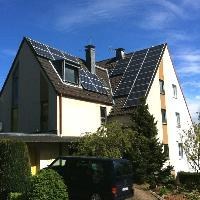(LUXEMBOURG) – The EU Council formally adopted a revised directive on the energy performance of buildings Friday, with the aim of helping to reduce greenhouse gas emissions and energy poverty in the EU.
The revised directive sets ambitious targets to reduce the overall energy use of buildings, taking into account national specificities. It leaves to Member States which buildings to target and which measures to take.
Each Member State will adopt its own national trajectory to reduce the average primary energy use of residential buildings, by 16% by 2030 and 20-22% by 2035. For non-residential buildings, they need to renovate the 16% worst-performing buildings by 2030 and the 26% worst-performing buildings by 2033. Member States are able to exempt certain categories of residential and non-residential buildings from these obligations, including historical buildings or holiday homes.
Citizens will be supported in efforts to improve their homes. The Directive requires the establishment of one-stop shops for advice on building renovation and provisions on public and private financing will make renovation more affordable and feasible.
The Directive is expected to reduce use of imported fossil fuels, and make zero-emissions’ the standard for new buildings.
All new residential and non-residential buildings must have zero on-site emissions from fossil fuels, as of 1 January 2028 for publicly-owned buildings and 1 January 2030 for all other new buildings, with a possibility for specific exemptions.
The Directive contains new provisions to progressively phase-out fossil fuels from heating in buildings and boost the deployment of solar power installations, taking into account the national circumstances. Member States will also have to ensure new buildings are solar ready’.
Subsidies for the installation of stand-alone boilers powered by fossil fuels will not be allowed as of 1 January 2025. There will be a boost for uptake of sustainable mobility thanks to provisions on pre-cabling, recharging points for electric vehicles and bicycle parking spaces.
To fight energy poverty and bring down energy bills, financing measures will have to incentivise and accompany renovations and be targeted in particular at vulnerable customers and worst-performing buildings, in which a higher share of energy-poor households live.
The revised Directive will be published in the Official Journal of the Union and enter into force in the coming weeks. Member States will then have to transpose it into national legislation.
Revised directive on the energy performance of buildings
Revised Energy Performance of Buildings Directive (EPBD) - guide


